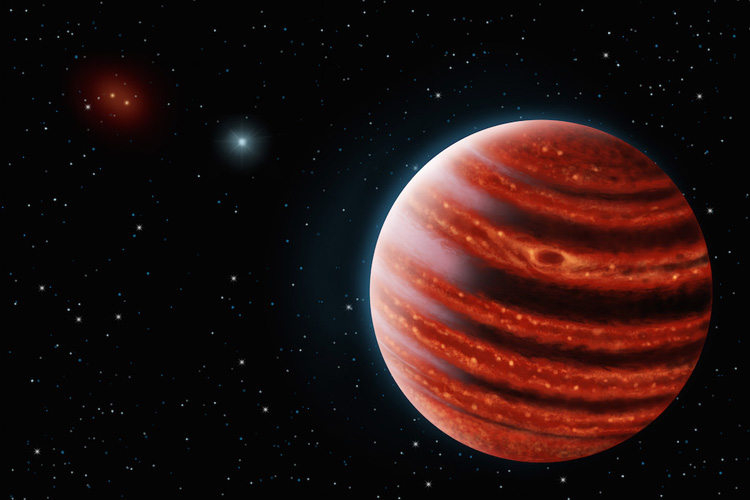-
Methane Enshrouds Nearby Jupiter-like Exoplanet
August 24, 2015
From article by Robert Sanders: "The Gemini Planet Imager has discovered and photographed its first planet, a methane-enshrouded gas giant much like Jupiter that may hold the key to understanding how large planets form in the swirling accretion disks around stars. The GPI instrument, which is mounted on the 8-meter Gemini South telescope in Chile, is the size of a small car and was designed, built and optimized for imaging and analyzing the atmospheres of faint Jupiter-like planets next to bright stars, thanks to a device that masks the star’s glare. “This is exactly the kind of planet we envisioned…
More -
Automated Planet Finder Discovers Three New Planets
April 29, 2015
The Automated Planet Finder (APF), a robotic telescope located at Lick Observatory, has discovered three new planets around a near-by star. These planets, or Super-Earths, have a mass seven to eight times that of Earth; while most planets discovered outside of our solar system have been the size of Neptune or larger, the APF purposefully targets smaller planets around nearby stars in efforts to find habitable planets. The APF's unique automated function enables the telescope to take on graveyard shifts to provide assistance in the search of exo-planets; this unique design is slated to assist with a complete survey of nearby…
More -
Distant Supernova Split Four Ways by Gravitational Lens
March 6, 2015
From release by Robert Sanders: "Over the past several decades, astronomers have come to realize that the sky is filled with magnifying glasses that allow the study of very distant and faint objects barely visible with even the largest telescopes. A University of California, Berkeley, astronomer has now found that one of these lenses – a massive galaxy within a cluster of galaxies that are gravitationally bending and magnifying light – has created four separate images of a distant supernova. The so-called “Einstein cross” will allow a unique study of a distant supernova and the distribution of dark matter in…
Tags:More



